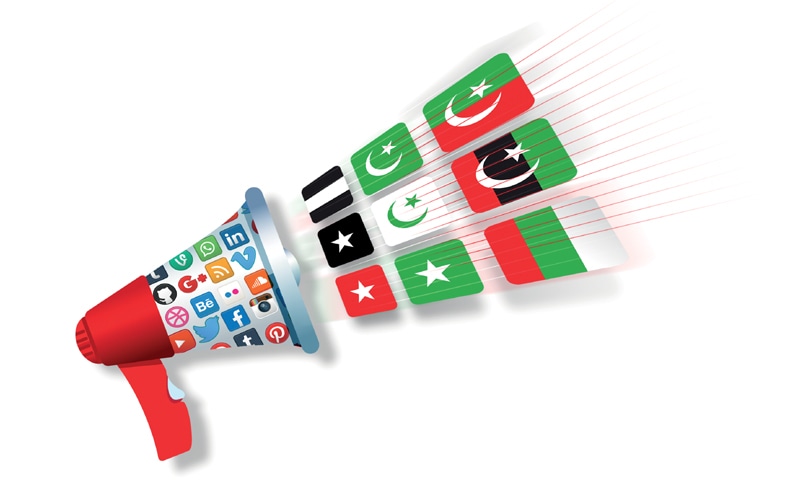Electioneering!
Published in Jul-Aug 2018
Noise, clutter and bombast. Flags, banners and posters. Hyperbole, pivoting and diversions. Raging battles on social media (SM) and screaming matches on TV. The visual media strategy seemed to be ‘carpet-bombing’ of the party colours via collateral, just like every other time. So, what was different in Election 2018?
SM made its debut in Election 2013, with one party taking a huge lead over the others and, in the process, creating trolls. Soon enough, the other parties got their act together and set up SM wings to put their message across, effectively raising the noise levels in cyberspace. One party’s champion was another party’s troll and personal attacks (with dirty tricks thrown in) became the norm.
Those of us who experienced elections in an earlier period would remember the large processions traversing the bigger cities, corner meetings and door-to-door campaigning. With the security situation being what it is, we were left with mega jalsas, where party heads were the featured speakers (replete with music and dancing). Blissfully, the roads remained free of traffic-blocking processions and life went on peacefully.
Perhaps I am not the demographic, so I did not receive any targeted messaging. Having said this, I think voters had firm (and entrenched) positions on who they were voting for, so we cannot be too sure of how effective SM and advertising have been in swaying the undecided.
The battle for ‘followers’ on each SM platform led to boasting about the numbers each leader/party had. Since the apps disclose these numbers, they were accepted as credible. As it stands, the cost of using SM across the various platforms is minimal and effective targeting by media advisors will reap rich dividends.
How much credit can the media campaigns take for the success or failure of the respective parties? What is the weight of ‘promise’ versus ‘performance’? Of ‘tried-and-tested’ versus ‘give-him-a-chance’? There are so many factors (including our wonderful biradaris, electables, independents and political dynasties) that are part of the mix, which is one reason why we saw so much of candidate shuffling before Election Day.
However, in rural areas and among the non-SM users, elections are a completely different prospect and campaigns have to be tailored to the local setting. A number of articles in the local press highlighted the harsh realities of life away from the big cities, with the power of the big landlords an intimidating (and deciding) factor.
A familiar feature of the OOH campaigns was the use of the party leader’s picture; it was, in most cases, bigger and more prominent than that of the candidate, leaving cynics to comment on how most parties were one-man entities. This year, campaign songs could easily compete with what Coke Studio or Pepsi’s Battle of the Bands usually offer and paid content in print and on electronic media was very high.
The UK (mainly) and US have a two-party system with traditional party strongholds and seats. Every now and then an upset does occur and, as we have seen with the Brexit Referendum and the US elections of 2016, the pollsters can get it wrong. Polling in Pakistan has been improving in sophistication and projections appear to be gaining in accuracy. However, since our system is constituency-based with multiple candidates, calling the results in advance can be misleading.
At the end of the day, how much credit can the media campaigns take for the success or failure of the respective parties? What is the weight of ‘promise’ versus ‘performance’? Of ‘tried-and-tested’ versus ‘give-him-a-chance’? There are so many factors (including our wonderful biradaris, electables, independents and political dynasties) that are part of the mix, which is one reason why we saw so much of candidate shuffling before Election Day.
Leon Menezes is a professor-of-practice at the IBA-Karachi.




Comments (0) Closed